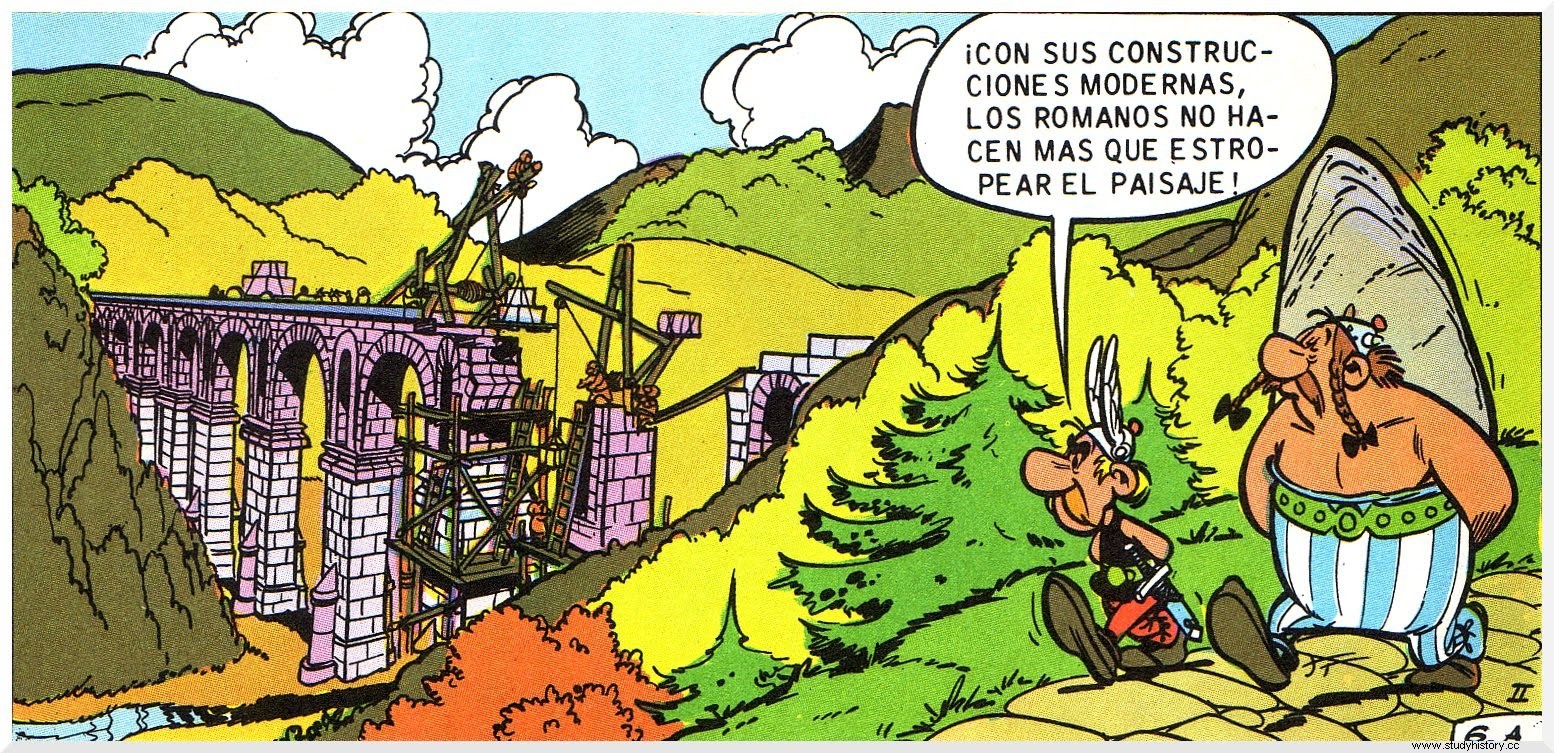For all the places in the world where the caligae have stepped (sandals of the Roman legionnaires) today you can find bridges, aqueducts, amphitheaters... and many other constructions that have stood for more than 2,000 years. Have you ever wondered what the secret of the solidity of these witnesses of time is? Well, simply because Roman concrete, not being as strong as modern concrete, resists the passage of time much better and, furthermore, its manufacturing process is less harmful to the environment.

It never rains to everyone's liking...
The most logical thing would be to analyze the composition of Roman concrete to see if there is any special component that makes it more resistant. And since I am not an expert on the matter -really, on anything-, I am going to draw on the study carried out by Italian and American researchers on various structures from this period located in Italy and which was published in the journal American Ceramic Society and American Mineralogy in 2013. The sample that aroused the most interest was a fragment of a concrete breakwater dated to 37 B.C. for the good condition in which it was found after having been subjected to the force of the waves for more than 2,000 years. The analysis of this fragment revealed that it was made with lime, water, sand, remains of bricks, small fragments of rock and... -drum roll- volcanic stones and ash . If the construction deserved it and the distance allowed it, pozzolanic ash was used. , so called because it was mined in the town of Pozzuoli , on the slopes of Vesuvius. Of the excellences of this ash, which he calls pulueris (dust), Vitruvius already speaks to us in the 1st century BC
There is also a kind of powder that by its nature produces amazing results. It occurs in the territories of the municipalities that are near Mount Vesuvius. This product, mixed with lime and pebbles, not only provides firmness to all kinds of constructions, but when docks are built in the sea they can set under water.
Therefore, the biggest difference between Roman and current concrete, since the rest of the components have hardly changed in centuries, is the so-called binder:we use Portland cement –which has to do with the island of Portland, located in the English Channel, and not with the US city- and the Romans mixed lime and volcanic ash. In addition, if these ashes were used in the production of Portland cement, the amount of lime used would decrease and it would require a lower temperature in its preparation, so less fuel would be burned and carbon dioxide emissions would also be lower.
Source:Inventions of the Ancients
